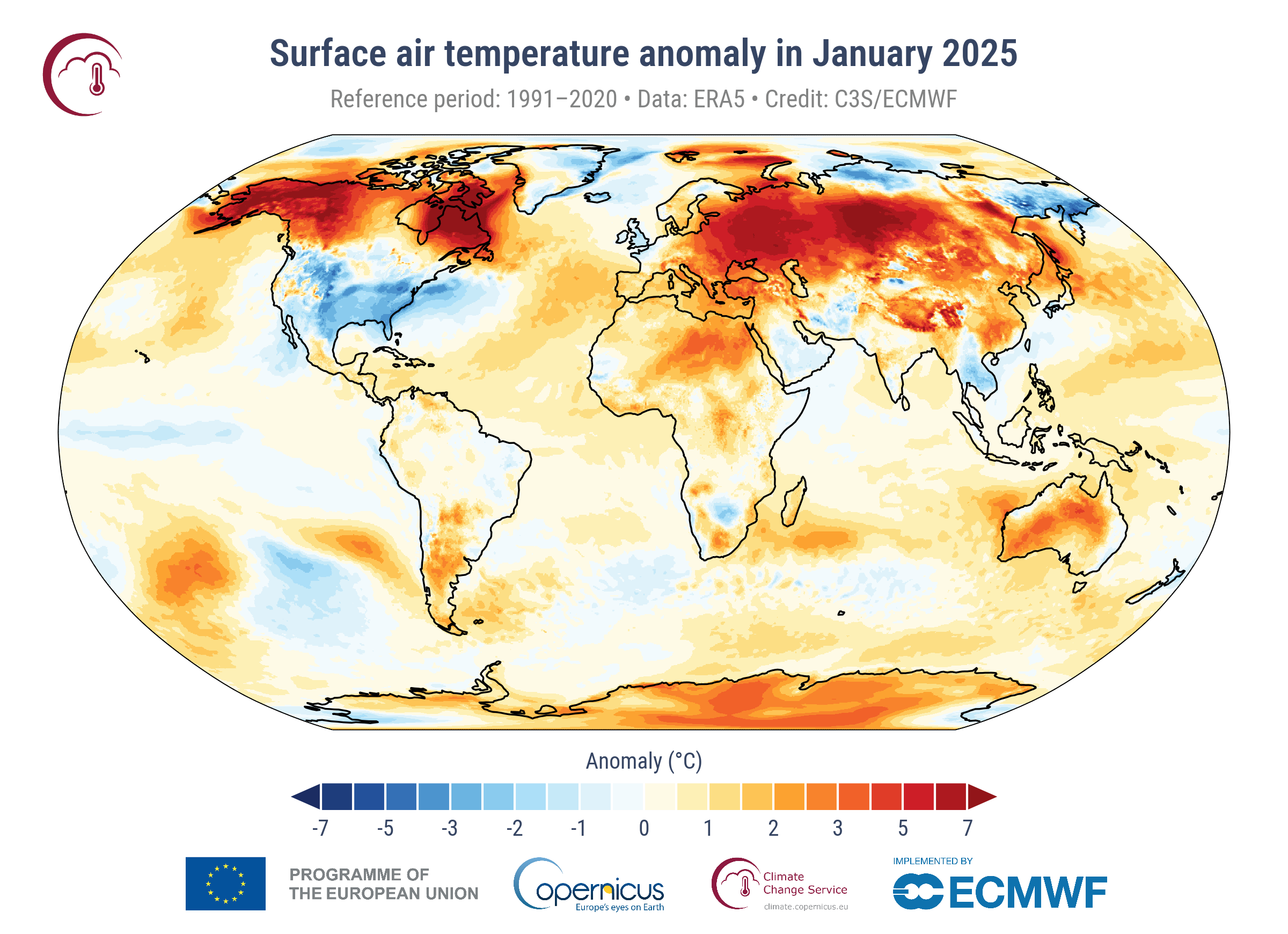
Unprecedented Heat Records Amidst Frigid Weather in North America
Intro
January 2025 has marked a significant milestone in Earth’s climate history, with global temperatures reaching record highs despite the cold snap griping North America. Let’s delve into the intricate interplay of factors behind this paradox.
Global Temperatures Soar
According to the European Union’s Copernicus space program and Berkeley Earth, January 2025 became the warmest January on record. The planet’s average temperatures exceeded pre-industrial levels by 2.95-3.15 degrees Fahrenheit (1.64-1.75 degrees Celsius). This unprecedented warmth fits into a pattern of gradual global warming driven by human activities.
Contributing Factors
Besides long-term climate change, several other factors contributed to the sustained heat. A strong El Niño, the warm phase of the Pacific Ocean’s temperature cycle, released excessive heat into the atmosphere. Additionally, a reduction in air pollution from shipping and China allowed more solar energy to enter the oceans, warming them further. Weaker air currents over the ocean slowed evaporation, allowing heat to accumulate.
Oceans as Heat Batteries
Oceans act as thermal batteries, absorbing and releasing vast amounts of heat. The combination of El Niño and other factors led to the absorption of an extraordinary amount of heat by the oceans, pushing water temperatures to record highs. These hot ocean temperatures can trigger underwater heat waves, damaging ecosystems and fueling tropical storms and hurricanes.
La Niña’s Delayed Arrival
Typically, the cool phase of the Pacific Ocean temperature cycle, known as La Niña, emerges after El Niño, lowering global air temperatures. However, the developing La Niña is yet to mature fully, allowing the warmth associated with the marine heatwave conditions to persist.
North America’s Cold Snap
The current cold snap in North America is an anomaly within the global warming trend. Arctic air spilled down due to a wobbly jet stream and an elongated polar vortex. Ironically, global warming may have contributed to this cold weather. As the Arctic warms faster than the rest of the planet, the atmospheric currents that confine cold air weaken, allowing Arctic air to seep out.
Conclusion
The record-breaking heat of January 2025 highlights the ongoing climate crisis, with global temperatures perilously close to exceeding the target set by the Paris Climate Agreement. The confluence of El Niño, reduced air pollution, and weakened air currents amplified the warming effect. While La Niña is expected to eventually cool the planet, its delayed arrival and weak intensity suggest that the current warmth will persist. The cold snap in North America, though seemingly contradictory, is a symptom of a rapidly changing climate, demonstrating its complex and unpredictable impacts.
